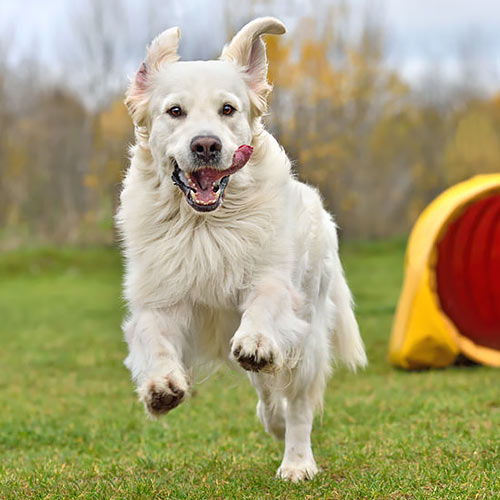This article is not for folks who want/have a pet puppy. Rather, it is directed towards those wanting a future working dog. If that’s you, read on and save yourself some money, time, and frustration.
Many people short-circuit their working dog goals before they ever get their new pup home. Why? They purchased a young puppy that they eventually want to become a personal protector or detection dog.

First, let’s define an “older pup.” When using this phrase, we mean a pup that is 10-16 months of age. She’s still a pup – just not a “toddler.” The exact age will depend upon the bloodline you purchase from and the training ability of the breeder. If you’re wanting a working prospect puppy, don’t succumb to buying an 8-week-old. Read on for the why’s and wherefores.
Second, let’s define a “working prospect pup.” For the sake of this article, we define a working prospect puppy as one slated to work as a personal protection dog, detection dog, SAR/HRD, and/or police K9s.
If you’re familiar with Conifer Canine, you know that we have been serious breeders of German Shepherds since 1993. Therefore, we’re knowledgeable enough and frank enough to tell you that you need to wait until a puppy is a little older before purchasing a working prospect. By the way, a reputable breeder isn’t in a hurry to push his pups out the door at 6-7 weeks of age. There are many advantages – and no disadvantages – to the wait.
Some people worry that purchasing an older pup will hinder the bonding process. There is no truth to this at all. Dogs are man’s best friend because they adapt very easily. Feed them and they’re your best friend ???? We have personally imported dogs ranging in age from 16 months to 9 years of age and have no bonding issues with any of them. So this concern is really a non-issue.
Additionally, some people purchase a pup so that it can be raised around the young children in the family. They, again, want the bond to take place. But they are unaware, many times, that a jumping, nipping, rambunctious puppy isn’t going to encourage bonding with the smaller members of the family. In fact, many toddlers learn to dislike puppies because of this: they nip, they jump, they steal ice cream cones ???? And – to be effective for the puppy’s future work – you must ignore the nipping and jumping for a while – which most toddlers cannot endure – understandably. More on these frustrating puppies in a moment…
Ok, back to the advantages of purchasing an older puppy…
- The puppy is past many of the frustrating puppy issues. He/she has matured past many of the issues that most people dread anyway: housetraining, nipping, jumping, pulling on clothes, etc. Keep in mind that working puppy prospects must be raised entirely differently than pet puppies (see our other articles on this topic). A reputable breeder/trainer can develop the puppy’s drives without dampening those same drives which are so necessary as a working dog. The first year of a working dog’s life is so critical to his/her success.
- The breeder/trainer has established a solid foundation in the pup’s working success. Bitework has begun, confidence-building is in full swing, and drives are being developed. All this is done without hindering the pup and/or setting him back. Typically, people who buy a young pup do not know how to raise him/her correctly and therefore ruin an otherwise solid working prospect. Once it’s ruined it is very difficult and sometimes impossible to get the dog back on tract. This is why we say that the first year of a working dog’s life is critical to his future success.
- The hips/elbows can be given a preliminary x-ray. This way you know exactly what you’re getting. Getting a young pup (8-12 weeks old) is a coin toss on the hips. Yes, buying from a reputable breeder who has done the hips/elbow x-rays does contribute to success. However there are many environmental factors that influence the hips negatively such as running too far, too many steps, falls, etc. (We have a separate article on Hip Dysplasia p causes and prevention). It is better to purchase an older pup who already has had her hips looked at and declared clear of dysplasia. See, we just saved you hundreds if not thousands of dollars ???? It doesn’t make sense to gamble with your future success with a working dog by doing a coin toss on the hips. You’re going to invest thousands of dollars in this pup, so make sure you’re not ignoring this very important part of the equation.
- The pup has been through fear imprint period/s. There a periods during the first year of the pups’ life that greatly influence his temperament, with potential for harm in her disposition. Fearful issues (such as gunfire, thunderstorms, other dogs, to name a few) can be cemented if not dealt with correctly. Again, a reputable breeder/trainer knows how to handle these periods and get a dog through them without damage. Most pet owners have no clue when these periods are and no clue what to do when they arise. Save yourself some disappointment by letting the breeder/trainer get your pup though these phases for you.
- Many people buy a young pup because the price tag is cheaper than a year-old pup. The truth is, by the time you buy this pup, feed him, get his vaccinations, flea/heartworm prevention, x-rays, and raise him to his first birthday, you’ll spend the same amount as you would if you bought the pup at 1 year old (this is assuming you are raising the puppy as it should be raised…as a working prospect). And if we could compare the two pups (one which is family-raised and the other raised by the breeder/trainer) you’ll see that some of the drives needed for his work have been compromised. This price (investment) doesn’t even include the hundreds of hours of interaction, socialization, and training that goes into the pup’s first year of life. Your pup will be farther ahead (and your nerves won’t be as frazzled) if you leave this first year to the breeder/trainer.
Hopefully, you’ll take our experienced advice and save yourself a lot of time, frustration, and money. And if you’re looking for that working pup/dog prospect, feel free to contact us. Most of the time available dogs are posted on our For Sale page.

